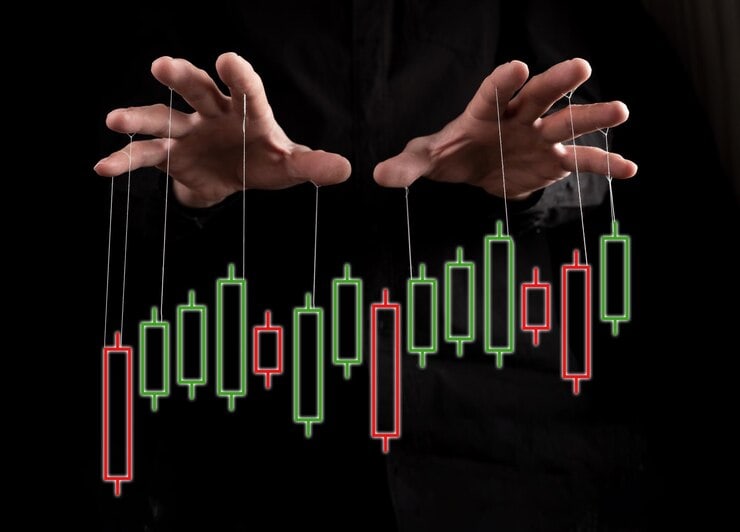Building a Trading Career from Scratch: Leveraging Forex Prop Firm Funded Accounts for Wealth Creation
Starting a career in forex trading can seem daunting, especially for those who lack substantial capital. However, proprietary (prop) trading firms that offer funded accounts have opened up new avenues for aspiring traders. Read More
One of the most significant barriers to entering the forex market is the requirement of capital. Prop trading firms mitigate this challenge by offering funded accounts. After passing an evaluation phase, which usually involves a trading challenge to assess the trader’s skill and risk management ability, traders are granted access to a trading account with a substantial capital limit. This setup enables traders to participate in the market without the need to risk their own money. More importantly, it allows them to learn trading with real stakes involved, which is a more effective way to gain experience compared to demo accounts that lack the psychological pressures of real trading. Prop firms are invested in the success of their traders because when traders win, the firm also profits. As a result, these firms often provide comprehensive education focused on risk management—one of the most critical aspects of successful trading. Learning to manage risks effectively can help traders not only preserve capital but also steadily grow their funds. Prop firms typically enforce strict risk management rules, such as setting a maximum drawdown limit and requiring stop-loss orders on each trade. This discipline is instilled from the beginning and becomes a valuable habit that shapes the trader’s approach to the markets. Many prop firms offer growth plans that reward successful traders with increased capital allocation. As traders achieve specific profit targets while adhering to risk parameters, they can qualify for larger account sizes. This structure not only incentivizes good trading practices but also simulates a real-world trading environment where increased performance can lead to career advancements and greater earnings. For traders aiming to build a career in forex, this opportunity for scaling is crucial. Becoming part of a prop firm gives traders access to a community of like-minded individuals. Many firms foster networking through online forums, webinars, and meetups. This community support can be invaluable, especially for new traders. It provides a platform for sharing strategies, challenges, and insights, thereby enriching the individual’s learning experience. Networking within such communities can also lead to other career opportunities in forex trading, such as mentorships, partnerships, and even roles in money management and education within the industry. Prop firms typically provide traders with state-of-the-art trading platforms and tools. These can include advanced charting software, data feeds, and analytical tools that might be cost-prohibitive for an individual starting on their own. Access to professional trading tools not only enhances the trading experience but also deepens the trader’s analytical capabilities. Learning to use these tools effectively can significantly impact decision-making processes and outcomes in trading activities. For aspiring forex traders without substantial starting capital, funded accounts offered by prop trading firms represent a valuable entry point. These firms provide not only the financial resources needed to start trading but also the educational and technological support to foster success. By capitalizing on these opportunities, dedicated individuals can effectively start their trading careers, learn essential skills in risk management, and potentially create significant wealth through strategic and disciplined trading. The journey of building a trading career from scratch requires patience and persistence, but with the right approach and resources, it is indeed a feasible and rewarding endeavor. 1. Access to Capital
2. Risk Management Education
3. Performance-Based Growth
4. Networking and Community
5. Technology and Tools
Conclusion
Forex Signals: Decoding the Navigation Tools and Using Them Wisely
The vast foreign exchange market, with its ever-fluctuating currency values, beckons traders seeking profit. But navigating these currents can be challenging. Read More
Forex signals can provide valuable insights, but they shouldn’t be a substitute for your own knowledge and risk management practices. By understanding how they work, using them strategically, and continuously honing your trading skills, you can make informed decisions and navigate the forex market with greater confidence. Demystifying Forex Signals
Forex signals are essentially trade recommendations provided by analysts or automated systems. They typically include:
Forex signals can be delivered through various channels:
The Inner Workings of Signal Generation
There are two main approaches to forex signal generation:
Tips for Using Forex Signals Effectively
While forex signals can be valuable tools, remember they are not foolproof. Here’s how to use them strategically:
Beyond the Signals: Additional Considerations
Remember, forex signals are just one piece of the puzzle. Here are some additional factors to consider:
The Takeaway: Signals as a Compass, Not an Autopilot
The Dance of Currencies: Understanding Correlations for Strategic Forex Trading
The foreign exchange (forex) market is a complex ecosystem where currencies don’t move in isolation. Often, currencies exhibit correlations, Read More
Currency correlations arise from various factors, including: There are two main types of currency correlations: Understanding currency correlations can benefit forex traders in several ways: To effectively utilize correlations in your trading strategy, consider these steps: The world is constantly evolving, and so are currency correlations: Understanding currency correlations is not about predicting the future; it’s about gaining valuable insights into how currencies interact. By incorporating correlation analysis into your trading strategy, you can make more informed decisions, identify potential opportunities, and navigate the complexities of the forex market with greater confidence. However, remember that correlations are not foolproof, and a comprehensive approach that considers fundamental and technical analysis is crucial for long-term success in forex trading. The Symphony of Currencies: Exploring Correlation Types
The Power of Correlations: How They Can Enhance Your Trading
Beyond the Basics: Measuring and Utilizing Correlations
The Dynamic Landscape of Currency Correlations
The Final Note: Correlations – A Tool for Informed Trading
Demo vs. Live Trading: A Stepping Stone to Forex Success
The allure of forex trading beckons, promising the potential for significant profits. But before diving headfirst into the real market, taking the time to understand and utilize demo accounts is crucial. Read More
Demo Trading: A Risk-Free Training Ground A demo account is a simulated trading environment where you can practice trading forex with virtual currency. Think of it as a flight simulator for the financial world. Here’s what makes demo trading so valuable: Live Trading: The Real Deal Live trading involves using real money to trade forex in the actual market. While it offers the potential for real profits, it also carries the risk of real losses. Here’s what sets live trading apart: Transitioning from Demo to Live with Confidence So, when are you ready to graduate from the demo world to live trading? Here are some key considerations: Taking the First Step: Tips for a Smooth Transition Conclusion
Demo trading is an invaluable tool for aspiring forex traders. By utilizing demo accounts effectively, you can develop your skills, manage risk, and build the confidence necessary to navigate the dynamic world of live trading. So, take advantage of this valuable training ground, and transition to live trading with a well-defined strategy, discipline, and a commitment to continuous learning. Good luck on your forex trading journey!
Copy Trading vs. Account Management: Understanding the Differences and Similarities
Copy trading and account management are two popular approaches in the forex and financial markets that allow individuals to benefit from the expertise of experienced traders. Read More
In this article, we will explore the characteristics of copy trading and account management, compare their differences and similarities, and provide insights to help traders decide which approach may suit their needs. Copy Trading: Copy trading, also known as social trading, is a form of automated trading where traders replicate the trades of experienced investors, known as signal providers or traders, in real-time. With copy trading, individuals can browse through a selection of signal providers, analyze their performance metrics, risk profiles, and trading strategies, and choose to automatically copy their trades into their own trading accounts. Copy trading platforms typically offer features such as risk management tools, performance tracking, and transparency in signal provider selection. Account Management: Account management, on the other hand, involves entrusting the management of one’s trading account to a professional trader or money manager. In this arrangement, the trader has discretionary authority to make trading decisions on behalf of the client, aiming to generate profits while adhering to pre-defined risk parameters and investment goals. Account management services may vary in terms of fee structures, performance fees, and minimum investment requirements, depending on the provider’s expertise and track record. Differences between Copy Trading and Account Management: Similarities between Copy Trading and Account Management: Both copy trading and account management provide access to the expertise of experienced traders, allowing individuals to benefit from their knowledge, skills, and trading strategies. Both methods offer a passive investment approach, where individuals can participate in the financial markets without actively managing their trading accounts. Which One Should Traders Try? The choice between copy trading and account management depends on individual preferences, risk tolerance, investment goals, and level of involvement in trading. Traders who prefer a hands-off approach and seek to benefit from the expertise of experienced traders may find copy trading appealing. On the other hand, traders who desire more control over their trading decisions and prefer a personalized approach to portfolio management may opt for account management. Ultimately, it is essential for traders to carefully evaluate their options, conduct thorough research, and choose the approach that aligns with their objectives and risk appetite.
The Case for Beginner Traders to Consider Managed Accounts
For beginner traders venturing into the world of financial markets, navigating the complexities of trading can be daunting. While self-directed trading offers autonomy and control, it also comes with risks and challenges, particularly for those lacking experience and expertise. Read More
Managed accounts are overseen by professional money managers or portfolio managers with expertise in financial markets and investment strategies. These professionals employ their knowledge, skills, and experience to make informed trading decisions on behalf of account holders. For beginner traders lacking the time, knowledge, or confidence to manage their investments effectively, entrusting their funds to experienced professionals can provide peace of mind and potentially superior results. Make a search on the below mentioned site, if you are seeking for more information about forex funded account. Managed accounts typically offer diversification benefits by investing in a variety of assets, such as stocks, bonds, currencies, and commodities, across different sectors and regions. Diversification helps mitigate risk by spreading investments across a range of assets, reducing the impact of volatility and market fluctuations on the overall portfolio. For beginner traders with limited capital or investment knowledge, accessing diversified portfolios through managed accounts can enhance risk-adjusted returns and improve portfolio stability. Professional money managers employ risk management techniques to protect capital and preserve wealth. They conduct thorough risk assessments, establish risk tolerance levels, and implement strategies to mitigate downside risk and preserve capital during market downturns. For beginner traders susceptible to emotional biases and impulsive decisions, entrusting their funds to disciplined professionals who prioritize risk management can help prevent costly mistakes and ensure a more prudent approach to investing. Managed accounts provide beginner traders with access to seasoned professionals who possess specialized knowledge and insights into financial markets. These experts conduct in-depth research, analysis, and due diligence to identify investment opportunities and optimize portfolio performance. By leveraging the expertise of money managers, beginner traders can learn from their strategies, decision-making processes, and market insights, enhancing their understanding of trading and investment principles over time. Managing investments can be time-consuming and demanding, particularly for beginner traders juggling other responsibilities and commitments. Managed accounts offer convenience and time savings by delegating the day-to-day oversight and decision-making responsibilities to professional money managers. This allows beginner traders to focus on their core activities while benefiting from passive investment management and ongoing portfolio monitoring. Managed accounts typically provide transparent reporting and regular updates on portfolio performance, holdings, and transactions. Beginner traders can access comprehensive reports, statements, and performance metrics to track the progress of their investments and evaluate the effectiveness of the managed account service. This transparency enhances accountability and fosters trust between investors and money managers, ensuring alignment of interests and transparency in investment outcomes. In conclusion, managed accounts offer beginner traders a compelling option to gain exposure to financial markets, access professional management expertise, and potentially achieve improved investment outcomes. By entrusting their funds to experienced money managers who prioritize diversification, risk management, and transparency, beginner traders can navigate the complexities of trading with greater confidence and peace of mind. While self-directed trading remains a viable option for some investors, managed accounts provide a valuable alternative for those seeking guidance, assistance, and potentially enhanced results in their trading journey. Professional Management:
Diversification:
Risk Management:
Access to Expertise:
Convenience and Time Savings:
Transparency and Reporting:
The Vital Role of Trading Platforms: Harnessing Their Benefits for Enhanced Trading Experience
In the modern financial landscape, trading platforms have become indispensable tools for both novice and seasoned traders. They offer an interface for buying and selling securities, currencies, Read More
Understanding Trading Platforms:
A trading platform is a software application used to execute trades in various financial markets. It allows traders to manage their portfolios, access real-time market data, execute trades, and perform analysis. Trading platforms can be provided by brokerage firms or independent software developers, and they vary in terms of functionality, usability, and features.
The Necessity of Trading Platforms:
Access to Global Markets:
Trading platforms provide access to a range of domestic and international markets from a single interface. This global access is essential for diversifying portfolios and capitalizing on a wide range of trading opportunities.
Real-Time Market Data and Analysis Tools:
They offer real-time market data, which is critical for making informed trading decisions. Additionally, platforms come equipped with various analysis tools (like charts and technical indicators) that aid in evaluating market trends and asset performance.
Speed and Efficiency:
Trading platforms facilitate quick and efficient trade execution. In fast-paced financial markets, the ability to execute trades swiftly can significantly impact profitability.
Automated Trading Options:
Many platforms offer automated trading options, allowing traders to set specific criteria for trades that will be executed automatically. This feature is especially beneficial for those who cannot monitor the markets continuously.
Reduced Costs and Fees:
Online trading platforms often have lower fees compared to traditional broker-assisted trading. This cost-effectiveness is a significant advantage for traders, particularly those with smaller capital.
Accessibility and Convenience:
Most platforms are accessible online or through mobile apps, offering convenience and flexibility. Traders can access their accounts and trade from anywhere, at any time.
Benefits of Having a Trading Platform:
Enhanced User Experience:
Modern trading platforms are designed with user experience in mind. They offer intuitive interfaces, making it easier for traders of all levels to navigate and manage their trades.
Risk Management Tools:
Platforms provide various risk management tools, such as stop-loss orders, which help traders manage and mitigate risks associated with trading.
Educational Resources:
Many platforms offer educational resources like tutorials, webinars, and demo accounts. These resources are invaluable for beginners and those looking to enhance their trading skills.
Customization and Personalization:
Traders can customize their trading environment to suit their preferences and strategies. This includes setting up custom alerts, watchlists, and choosing which information and tools are displayed.
Social Trading and Community Features:
Some platforms offer social trading features, allowing traders to follow and copy the trades of experienced investors. This can be a great learning tool and a way to diversify trading strategies.
Security and Reliability:
Reputable trading platforms employ robust security measures to protect user data and funds. They also ensure reliability with minimal downtime, which is crucial for uninterrupted trading.
Conclusion:
In conclusion, trading platforms are a necessity in today’s financial trading world. They offer an array of benefits that enhance the trading experience, from providing access to global markets and real-time data to offering cost-effective, efficient, and user-friendly trading solutions. Whether you are a beginner or an experienced trader, a reliable trading platform is an essential tool in your trading arsenal, helping you to execute strategies effectively and achieve your trading objectives.
Harnessing the Power of MetaTrader 5: A Comprehensive Guide for Traders
Introduction
In the ever-evolving world of online trading, selecting the right platform can make a significant difference in a trader’s journey. Among the plethora of options available, Read More
Multi-Asset Trading at Your Fingertips:
MT5, developed by MetaQuotes, goes beyond the realm of forex trading. It’s a true multi-asset platform, supporting stocks, equities, and commodities trading. This adaptability makes it ideal for traders who seek to diversify their investment portfolios. Unlike its predecessor, MT4, which primarily deals with over-the-counter products, MT5 allows direct exchange trading, offering a more transparent trading experience.
Unmatched Access to Historical Data:
One of the critical elements for successful trading is access to reliable data. MT5 provides traders with the ability to download accurate tick data straight from the broker’s server, ensuring that technical analysis is based on precise information. This level of detail, including enhanced chart data storage, is invaluable for traders who rely heavily on historical data for their strategies.
Advanced Charting Capabilities:
MT5 offers an expanded range of charting options, growing from 9 to 21 different charts. This expansion is crucial for detailed technical analysis, allowing traders to identify patterns and trends more effectively. Moreover, the inclusion of additional pending order types, like buy stop limit and sell stop limit, equips traders with more tools to execute their trading strategies accurately.
Depth of Market and Enhanced Speed:
MT5 introduces the market depth function, missing in its predecessor. This feature provides insights into market activity, aiding traders in predicting execution prices more accurately. Additionally, MT5’s 64-bit, multithreaded architecture ensures faster order processing and more efficient algorithm back-testing, crucial for high-frequency traders.
Ruler Function and Compounding Indicators:
The ruler function in MT5 is an essential tool for measuring the number of pips between points, critical for setting stop losses or profit targets. Also, the ability to compound indicators in MT5 means traders can access and analyze a greater amount of information simultaneously, enhancing the overall trading experience.
Customization and Autochartist:
MT5’s extensive chart customization options cater to a wide range of trading styles and preferences. Additionally, the Autochartist feature provides automatic, real-time charting, volatility analysis, and trend analysis capabilities, alerting traders to potential trading opportunities.
Conclusion
MetaTrader 5 is more than just a trading platform; it’s a comprehensive tool that can significantly enhance a trader’s ability to analyze markets, execute trades, and manage risk. Whether you’re a novice exploring the trading world or a seasoned professional looking to optimize your strategies, MT5 offers a blend of functionality, speed, and versatility. Its advanced features, combined with user-friendly aspects, make it an excellent choice for anyone serious about online trading. As the financial markets continue to evolve, having a platform like MT5 can be a key asset in navigating the complexities of trading.
Top 6 Trading Tricks For MT4 Users
MetaTrader 4 is a top-rated trading platform used by millions of traders all around the world. This platform was launched in 2005 with a unique user-friendly interface, features specially designed for forex traders, and powerful tools to Read More
This proves that MT4 has all the functions a trader would need to carry out a trading process easily. However, knowing a few tricks can make trading on the MT4 platform less complicated for traders. Today, you will get to learn the top 6 trading tricks that can be applied on the MT4 platform for a superior trading experience. The first trick is simple, but it can make a huge difference in how you view trade positions. The classic MT4 platform allows you to drag a position you opened and bring it to the charts for a quick review. For this, all you have to do is go to the ‘Account history’, which is right there on your Terminal panel and then pick a position of your choice. After that, you can easily drag it and place it on your charts. This makes it easy for you to keep track of your trades and get an overview of your trade positions at the end of the day. Once you bring the preferred trade or position to the chart, you will get to see all key details related to the position. If you have already closed the position, you can view the price you entered, the target level set, the stop loss, and the exit point. I recommend all traders try this trick once, and you can add this step to your trading routine as well. The habit of viewing your positions on charts allows you to evaluate your trades daily and check if they went well as per your plan or if anything is going wrong with the process. This actually helps you to manage your trades better while trading on MT4. Traders who haven’t tried this or any MT4 trick before should try them in a demo account to find out how these actually work before trying them in live trading. This is a trick to save your charts and create a backup to keep the template you have been using. The template will be available even after deleting all the chart data. For this, firstly, you should create a new chart, and then you need to open settings by pressing F8. The template should be saved in the Charts menu. You need to remember the template name to see it later, so give it a simple name and note it somewhere if you are forgetful. After this, you can always view a chart by choosing its template from the Charts Menu. By creating this backup, you can ensure that you won’t lose the data from a chart even if you end up deleting it all, which can sometimes happen. Other than this, you will be able to use this template as a reference as well. So, next time you plan to delete all the chart data, use this trick and create a backup for the same. There is no doubt that MT4 has a simple and beginner-friendly user interface, but you might get a feeling that your screen is overloaded with some basic tools and features while trading, making it hard for you to focus on the actual process. For instance, you may not be fond of seeing the newsfeed or symbols of currencies when you are trying to place a trade. The news feed can be a point of distraction for many of us. But you can remove all of these not-so-important components from your screen by using a simple trick. You just need to head to the Tools tab and click on options. Then, you will see that all the tools that are there on the screen are enabled. You just need to uncheck the ones you wish to remove. Suppose you just want to get rid of the news feed, then you simply uncheck ’Enable Newsfeed’, and you will be able to trade without Newsfeed on your screen. This trick is very helpful for traders who want their screen to be more free with less traffic. This can make the trading process easier as you are not overloaded with tools which you don’t even use while entering trades. It is also useful to make your interface look clearer; that way, you won’t get confused or lost. and also saves you from wasting your time if you are someone prone to getting distracted. Did you know that you have the option to make your graphs more readable by adding some text as an explanation? This option can be found in the ‘Inset menu’. You just need to choose ‘Inset text’ from the Insert menu. After this, you can always write text on your Chart by clicking anywhere on it and entering what you want to write in the dialogue box. However, the text that can be inserted at once is limited, and if you surpass the limit, you will have to open a new dialogue box to add more text. This trick is very useful for taking note of what you have interpreted by analysing the charts to ensure you don’t miss anything important while drawing a conclusion from the analysis. All traders will have a set of scripts and indicators that they tend to use more often than others. You will be using the same set of indicators for each and every trade, and you can use this trick to save it for quick access anytime you need it. For this, you just need to mark the preferred indicators as your favourite, which makes them easily accessible, saving you time. In order to do this, you simply pick the indicator of your choice and right-click on it to see the option ‘Add to favourites’. Once you select that, the chosen indicator will be saved as your favourite. This is another simple yet useful trick you can try while trading on MT4. We tend to spend a lot of time placing and executing our trade in a typical setting, but the one-click trading option of MT4 is the best way to cut down this time and increase the speed with which you enter trades. One-click trading is also way easier and more convenient to do on a daily basis. Enabling the one-click trading mode allows you to select and set your buy and sell positions with a single click. But, you need to make sure that you’re trading with the right margin because once the order is placed, you will either make a profit or a loss and if the margin used is way too high, then losses can be bigger. To keep the margin requirements at an optimum level, use a margin calculator, which accurately analyses the margin required for each trade. To activate this option, you can simply go to the Tools menu and click on Options. You can see a lot of options that are enabled with a tick mark, and you just need to make sure that one-click trading is enabled. If not, you can enable it manually. Sometimes, the one-click trading option does not appear even after being enabled. In that case, you can right-click on the trade chart and select ‘one-click trading’ from the drop-down menu. One-click trading has become a lot more popular due to the emergence of modern trading strategies and techniques, which are faster-paced. The regular trading process on MT4 is a 2 step process, while One-click trading narrows it down to just one next, allowing you to place orders right away without the need to give secondary confirmations. The trick of one-click trading allows you to place and execute your trades quickly, simplifying the trading process. With that, you have learned all the top 6 trading tricks that can enhance your trading experience on the powerful MT4 platform. All experienced MT4 users are using these tricks, and newbies can also make use of these simple techniques to make trading swifter and more efficient. To sum it up, trading is a process which takes time to learn and attain perfection. It demands a solid combination of skills and the essential tools to easily carry out the trading process. So, make sure you keep learning and developing your skills while trying the tricks mentioned above for MT4 trading. Trick to see your trade positions on the chart
Making your Screen less crowded
Entering text to explain Graphs
Saving your most used indicators
One-Click Trading
Final Summary









